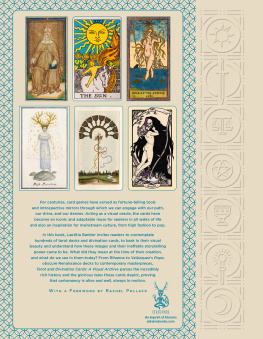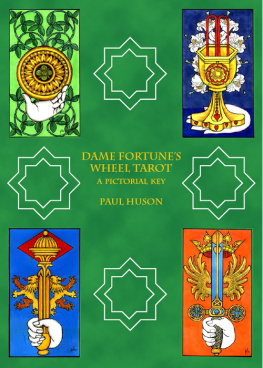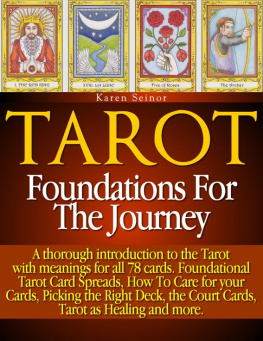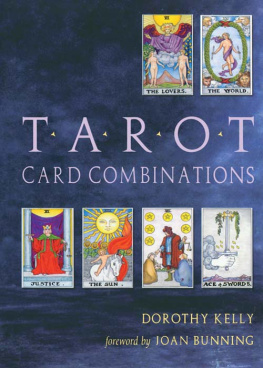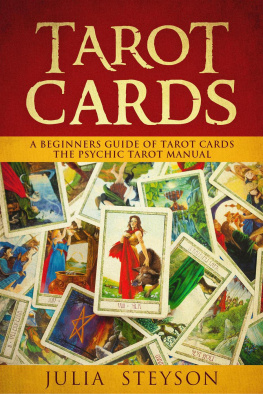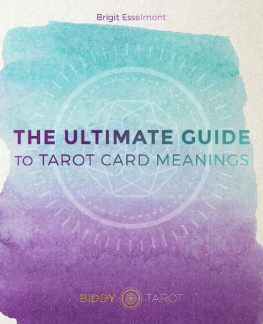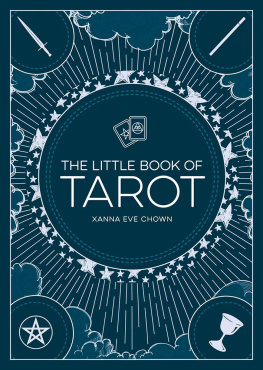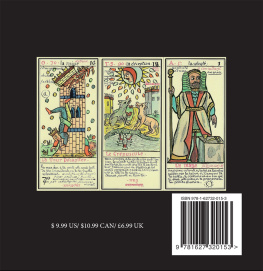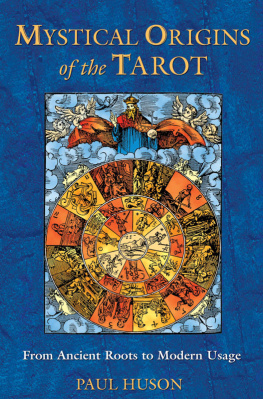Contents
Guide
Page List
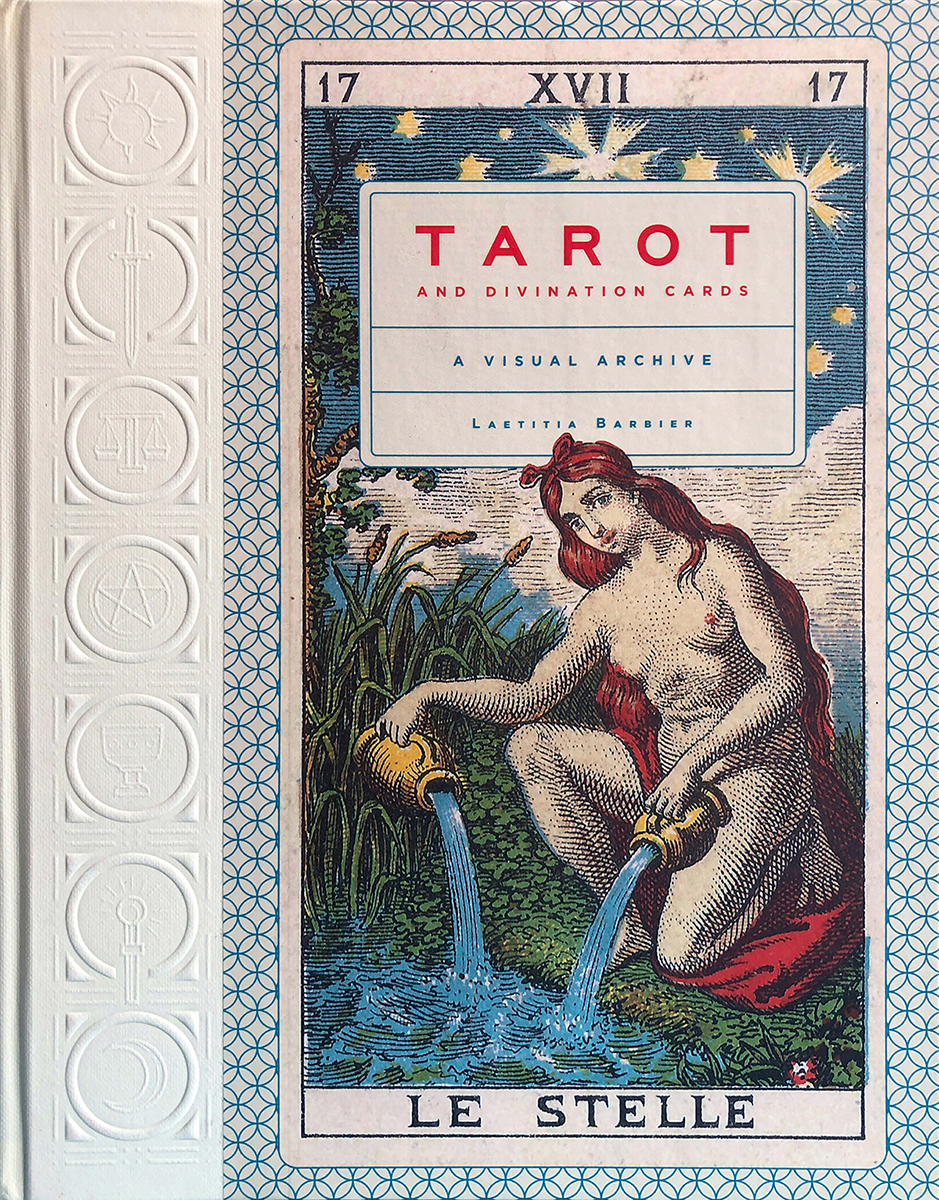


The High Priestess, Arthur Hacker, nineteenth century.
IN THE BEGINNING WAS THE VOICE
In the beginning was the voice. These words woke me up in the middle of the night, not as a dream or a spoken statement, but as a kind of message waiting for me. I had spent the day and evening reading this wondrous book, thinking about its array of marvels over many centuries and many traditions, the way it gracefully dances between Renaissance classical art, folk images, alchemical and magical symbols, fashion shows, and mystically received messages, all the way to movies, television, and comic booksand especially how Laetitia moves gracefully through every part of it.
What unites it all is joy, that much is clear on every pagelove, and delight for all the manifestations, all the twists and turns of cartomancy and its endless variety. Many years ago, a Greek-American teacher named Ioanna Salajan told a group of us in Amsterdam, Nothing is learned except through joy. And then she added that many of us would not believe it. I believed it, and I wonder now if it was because the tarot had already come into my life, and even though the cards might expose pain and hard challenges, there was always joy in the discovery.
Laetitia knows this. We see her delight in every picture, every story. We feel it at the beginning, when she tells us that she and the tarot were like the vampire sweethearts in Jim Jarmuschs movie, Only Lovers Left Alive, always drawn back to each other so that the years would fall away the moment she picked up the cards again.
Notice that she does not say that she was drawn back, but that she and the tarot were pulled to each other. This is a great secret, one that Laetitia not only knows but lays bare before us, over and overthe tarot, and all the varied traditions of les jeux divinatoires, the games known collectively as cartomancy, are alive, a living being expressed in pictures and meaning.
Let me be clear. I do not refer to angels, or devils, or ghosts haunting or simply inhabiting the pictures. There are certainly many for whom the cards, tarot or others, open them to actual spoken messages from angels and guides, as many contemporary psychics like to say. Rather, I am talking about something simpler, and perhaps stranger, or at least more direct. For many of us, the cards do not need an outside spirit to enter them. The pictures themselves, fed by centuries of artists and writers and readers devoted to them, become our teachers, our friendsour lovers. All this we find in this wonderful book, in every cluster of images, every joyous story.
And let us say as well, and as strongly as possibleno one has ever done anything like this before. To my knowledge, no one has even attempted anything like this, a deep and loving survey of the entire history of cartomancy. We might think of Stuart Kaplans four-volume Encyclopedia of Tarot. But Kaplans work was exhaustive rather than appreciative, a heroic attempt to include every tarot deck from the beginning to the presentan impossible goal, of course; the final volume was incomplete even before it was released. And, of course, he confined himself to tarot, rather than explore the vast multiverse (a comic-book term Laetitia would no doubt appreciate) of cartomancy, from the earliest days to the present.
Laetitia too does not attempt to cover the vast range of contemporary cards, whether tarot or oracle decks. For this we will have to hope for a second volume. But she certainly explores the world of non-tarot cartomantic traditions, not just the ones many of us know, but deck after deck of obscure miracles, fascinating in their (sometimes unique) mantic systems and gorgeous in their lush art.
And, yet, with all this, there was something else in the book. And so I woke up in the middle of the night with that sentence. In the beginning was the voice.
Here is the first thing the book tells us: I am a Frenchwoman writing in English. There is something special about writers who write in the tongue, which is to say the sounds, the living voice of their adopted country. We might think of Isaac Bashevis Singer, who began in Yiddish and switched to English, or most famously, Vladimir Nabokov, who first translated his own books from the original Russian, then wrote directly in English. Both of these, Nabokov especially, sought fluency in their new language, the quality of a native speaker.
Laetitia embraces her border-crossing, the straddling of two linguistic worlds to bring a sense of play and wit. It is the Voice of Delight, and it infuses every page, even those that are mostly, sometimes entirely, pictures. For isnt the tradition of cartomancy one of images speaking to us? And here they speak across cultures, as does the author.
As I write this, the internet, that wondrous Otherworld straddling the physical and the disembodied realm of information, has given birth to a new generation of cartomantic mediums. That somewhat ponderous phraseLaetitia no doubt would find a better onerefers to those psychic card readers mentioned above, who refer to angels and guides. They use tarot, often multiple decksand how can you resist, there are so many?and, like this book, often mix tarot and oracle cards. At the same time, the messages they receive may come in images or statements. And because the internet fosters equality and access above all else, the mediums want us to know that we too have this ability.
We just need to open ourselves, to trust. To listen.
For Laetitia, the angels and guides are the cards themselves. And their language, their native tongue, is images, which is to say beauty. Look through this bookreally, begin anywhere at all and go in any direction at all, and the inescapable message, almost a physical sensation, is that the true language of divination is beauty. The cards in fact contain precise meanings (this is perhaps most true of nineteenth-century cartomancy decks, such as Lenormand), sometimes even written directly on the cards, but they truly speak to us, even the simplest ones, through the power of images.
Many writers on tarot and cartomancy, especially its history, attempt a detached, objective style, attempting to distill from their words the passion and curiosity that originally drove them to their subject. Laetitia knows better, for isnt cartomancy, tarot or otherwise, at its core the most subjective and personal of experiences?
Not just the historians, but many of those who write about specific decks and traditions, say, Lenormand in cartomancy, or Etteilla in tarot, give a set of instructions for how to interpret the cards. I remember looking at an Etteilla deck once and noticing that if card A came up next to card B, you will go on a picnic but it will be rained out. Amazingly, the only time anyone ever did a reading for me with Etteilla, those two cards came out. The reader interpreted them psychologically.
Laetitia actually goes beyond the false separation of objective meaning and subject interpretation. She uses herself as the vehicle of understanding the cards and what they can mean in our lives, and her two languages as something akin to the two sphinxes, one black, one white, who pull the tarot chariot.

